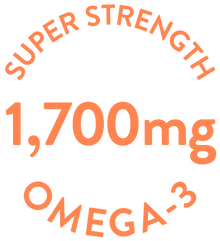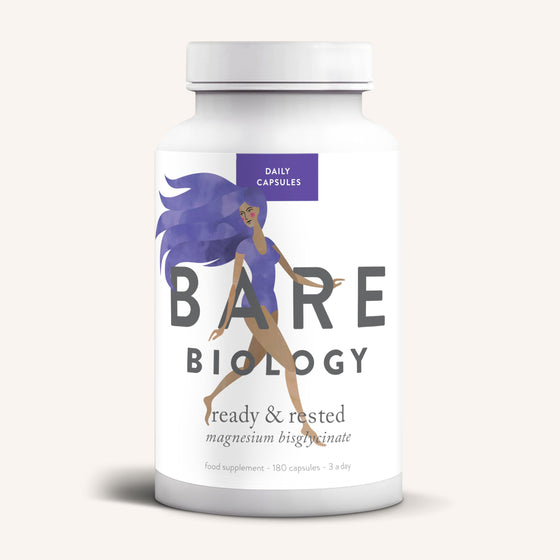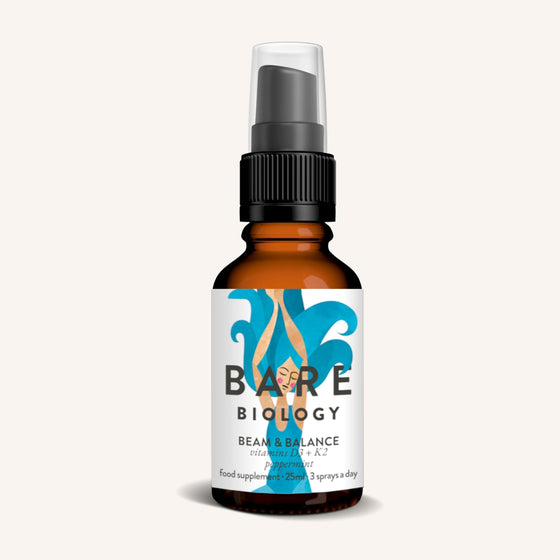Written by Nutritional Therapist Kate Fisk.
What do salmon, shrimp and flamingoes have in common? They all get their pink colour from a bright red pigment called astaxanthin, found in the microalgae they feed on. It's also produced by other microorganisms, including fungi, bacteria and yeast, as a protective antioxidant in response to environmental stress, such as exposure to too much ultraviolet light from the sun.
Astaxanthin is a type of carotenoid, a fat-soluble antioxidant of which there are over 600. Unlike other carotenoids, like those found in carrots, astaxanthin doesn't convert into vitamin A but has other unique properties. As a result, it's considered one of the most potent antioxidants found in nature.
Where does Astaxanthin come from?
As well as providing fodder for sea creatures, Haematococcus pluvialis is the most common source of all supplemental astaxanthin. It's a prolific microalgae, a microscopic plant-like organism that relies on the sea's tides to move around. Residing near the sea's surface, it takes energy from the sun and converts it into a food source for marine life. The presence of astaxanthin allows these tiny organisms to survive the harsh conditions of their habitat.
During the commercial production of astaxanthin, the microalgae are initially provided with the perfect growing conditions, during which time they flourish. Then light exposure is limited, and they're deprived of nutrients. As a stress response, they produce astaxanthin. The microscopic organisms are then dehydrated, and oil is produced using a non-solvent extraction.
How do you get Astaxanthin from your diet?
Food sources of astaxanthin include lobster, crab, shrimp, salmon roe, and wild-caught salmon. Wild salmon contains the most at around 3mg of astaxanthin per 100g. Salmon feed on Haematococcus pluvialis in the wild, which accumulates in their muscles, providing antioxidant protection and giving them their pinkish hue. However, farm-raised salmon are fed a diet of commercial feeds with the addition of what is most likely to be synthetic astaxanthin. In fact, over 95% of astaxanthin used in aquaculture, or fish farming, is synthetic due to the increased production costs of obtaining it from algae. The body can't use synthetic astaxanthin anywhere near as efficiently as the real deal, and it's 20 times less effective as an antioxidant. Perhaps unsurprisingly, concerns have been raised about its safety for human consumption.
Benefits of Astaxanthin
Astaxanthin's antioxidant and anti-inflammatory qualities have attracted the most interest in recent research.
As an antioxidant
Though essential for life, free radicals can cause untold damage if left to their own devices. These unstable molecules are the by-products of the many chemical processes our bodies need to function. But unhealthy lifestyle factors such as smoking, stress, and poor sleep can ramp up their production. Too many free radicals can lead to oxidative damage, a risk factor for many of today's chronic age-related conditions, such as type-2 diabetes and heart disease, and neurodegenerative diseases, such as Alzheimer's and Parkinson's. Antioxidants, produced by our body and found in many different foods, interact with these free radicals to stop them in their tracks.
Astaxanthin is considered one of the most powerful antioxidants, more potent than vitamin E. Due to its unique molecular structure, astaxanthin can simultaneously protect both the inside and outside of our cells against oxidative stress. And astaxanthin remains stable, unlike other antioxidants, which can turn pro-oxidant and cause damage once they've done their job.
Taking supplemental astaxanthin has been shown to reduce blood markers of oxidative stress. It also inhibits lipid peroxidation, meaning it does a great job of protecting the fragile fats that make up our cell membranes.
As an anti-inflammatory
Short-term inflammation is a good thing – it's a response by our immune system to clear up any potential infection caused by injury. On the other hand, chronic, prolonged inflammation is a significant risk factor for the development of many of the same chronic conditions associated with oxidative damage. Astaxanthin has been shown to dial down inflammation by downregulating inflammatory compounds.
In the world of supplements, astaxanthin is relatively new on the scene. As such, there aren't yet any official health claims associated with it approved by the EFSA (European Food Safety Authority). There are also relatively few robust studies, and it's recognised more research is needed. However, preliminary research does suggest supplemental astaxanthin has a broad range of potential benefits, including:
Brain health
The blood-brain barrier envelops our brain, acting as a kind of firewall: keeping toxins out and allowing very specific nutrients and compounds in. Astaxanthin is unique in its ability to get through this barrier, and so has great potential to mitigate the risk factors associated with neurodegenerative conditions such as Alzheimer's and Parkinson's.
Supplemental astaxanthin has also shown promise in improving neuroplasticity and neurogenesis. In other words, the ability of the brain to change and adapt with exposure to new experiences, as well as form brand new brain cells.
Eye health
As we age, much of the decline in eye health is also due to oxidative damage. And in the same way astaxanthin can pass through the blood-brain barrier, it can also pass through what is known as the blood-retinal barrier
According to emerging research, astaxanthin has been shown to positively impact both the prevention and treatment of diseases related to the eyes, such as macular degeneration, glaucoma and cataracts.
It may also help relieve eye strain caused by prolonged use of screens.
Heart health
When it comes to heart health, although further studies are needed, it looks like astaxanthin might help protect against arterial stiffness caused by inflammation.
It also promotes healthy levels of fats within the body, including triglycerides and cholesterol.
Skin health
It's not only its anti-inflammatory and antioxidant nature that supports skin health. But astaxanthin has also been shown in small human studies to reduce fine lines and age spots, improve elasticity, prevent collagen damage, and improve skin moisture content.
One small study also suggests astaxanthin protects against UV damage and 'helps maintain healthy skin in healthy people'.
The supplemental use of astaxanthin also shows promising results in other areas, including athletic performance, gut health and immune function.
About Vim & Vigour
In Vim and Vigour, we have combined the potency of astaxanthin with the most powerful vegan omega-3 on the market. Omega-3 supports heart, brain and eye health. Two capsules daily provide almost 1g of omega-3 and 4mg of astaxanthin.
The EFSA (European Food Safety Authority) states a maximum intake of 8mg of supplemental astaxanthin daily is safe for adults. (Although daily doses up to 40 mg have been used safely in studies for up to four weeks). This amount considers any additional astaxanthin included in your diet.
Astaxanthin is considered safe with no significant side effects, although there have been a couple of instances reported of it turning people's poo red when used in large doses!
It's best to take Vim and Vigour with or just after a meal, as this will enhance absorption.





